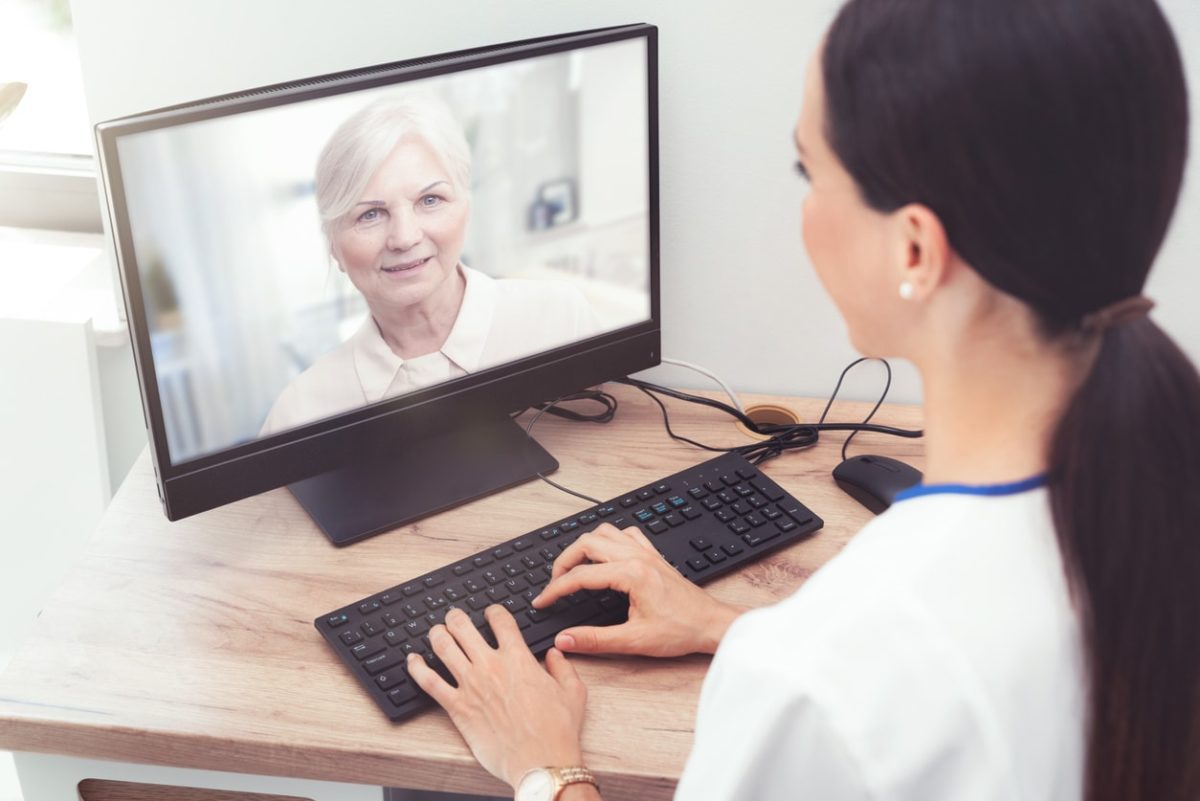Technology has ushered in new ways of providing care in the healthcare industry. One of the most exciting developments in the technological front is that of telehealth, sometimes referred to as “telemedicine” or “eHealth”. Caregivers are able to handle routine wellness checks and even certain diagnostics without having to visit a patient in person. In home health care, telehealth is rapidly being adopted, both as a means of providing essential care as well as to reduce certain care delivery risks. Insurance for home health care providers is the foundation of risk management for providers and their agencies; adding telehealth services to the care delivery model can serve to further manage a broad range of risks in this healthcare sector.
What is Telehealth?
Telehealth is the strategy of leveraging telecommunications equipment and related technologies like remote monitoring in managing patient care. Caregivers can now interact directly with patients through the use of telephone consultations, Internet video conferencing, or mobile computing connectivity. Telehealth is especially useful in the home health care setting, where remote locations and a diverse patient population often makes in-person visits a challenge. Using telehealth systems, caregivers can guide patients through well checks and procedures while those patients remain in the comfort of their own homes. Caregivers are also able to communicate with other healthcare providers, particularly for diagnostic and referral purposes. Finally, remote monitoring of patients allows for faster responses if a patient were to experience an injury.
According to a survey conducted by American Well and Harris Poll, about 66% of survey participants indicated an interest in telehealth, with nearly 10% of survey respondents reporting that they have already experienced a telehealth visit with a care provider. It is expected that most healthcare systems will adopt some form of telehealth as an essential part of the care delivery model within the next decade.
Benefits for Patients and Healthcare Teams in Telehealth Settings
There are many advantages to using telehealth in care delivery across the healthcare industry. By adopting telehealth services, several benefits can be found, including:
- Improved care for at-risk groups (elderly patients, patients with chronic diseases).
- Reduced in-person demands on facilities and their staff.
- Improved access for routine healthcare needs, especially those who live far away from healthcare facilities.
- Cost savings across the board, including energy consumption, travel expenses, waste, environmental impact, and staffing.
In simple terms, telehealth has the ability to extend the reach of healthcare teams and their resources, benefitting patients with improved health outcomes and greater satisfaction that their needs are being met.
Managing Home Health Care Risks with Telehealth
Insurance for home health care providers is an important part of the risk management puzzle, helping to protect caregivers, their employing agencies, and patients from a wide range of risks. To better manage risks, many home health care agencies have added telehealth services and features to their care delivery model.
One of the primary risks faced by home health care providers is travel to patients’ homes. Incidents occurring during travel or when arriving at remote locations can put caregivers at risk of harm, potentially leading to expensive claims on insurance policies. Telehealth serves to reduce travel risks, allowing caregivers to reduce the need to visit patients for routine checkups and even more complex procedures.
Remote monitoring systems are also a valuable part of the telehealth field. These systems allow caregivers to monitor medical conditions of patients without requiring in-person visits. For elderly patients, remote monitoring technologies provide numerous benefits; these systems can send alerts to caregivers if vital signs change or if the patient were to experience a slip and fall injury. Remote monitoring can help to ensure caregivers are able to respond quickly and more efficiently if a patient needs emergency attention.
Embracing the Future of Telehealth
Despite its widespread adoption in other healthcare sectors, the home health care industry has been slow to add telehealth services. One of the major roadblocks is that of a lack of reimbursement for telehealth services; the Centers for Medicare and Medicaid (CMS) has mostly restricted reimbursement to remote clinics, particularly in rural areas that are underserved by other healthcare facilities. A proposal by CMS in October 2018 aimed to change those restrictions, providing government-funded reimbursement for all enrolled patients, including those being served by home health care professionals. If the proposal is implemented, the changes will go into effect in 2020 and will pave the way for widespread adoption of telehealth services.
Two important takeaways from telehealth should be kept in mind:
- Telehealth does not replace in-person patient care. At its best, telehealth serves as a supplement to existing care delivery plans and can help caregivers provide better care for all patients whether they access their providers through telehealth systems or not.
- Insurance for home health care providers remains as the best way to manage the complex and challenging risks home health care agencies and their staffs experience in care delivery. Telehealth systems help to reduce some of those risks, but these systems still necessitate the need for comprehensive and adequate insurance coverage.
Telehealth represents the future of the healthcare industry. With technology, caregivers can provide outstanding care for patients in a variety of settings, and can do so more efficiently and at lower costs.
About Caitlin Morgan
Caitlin Morgan specializes in insuring assisted living facilities and nursing homes and can assist you in providing insurance and risk management services for this niche market. Give us a call to learn more about our programs at 877.226.1027.


